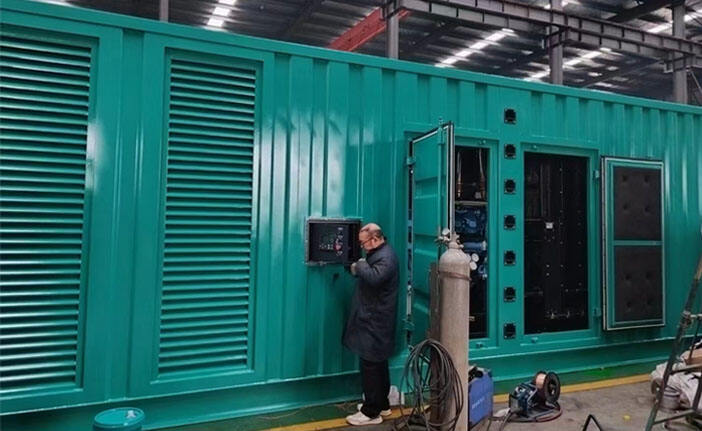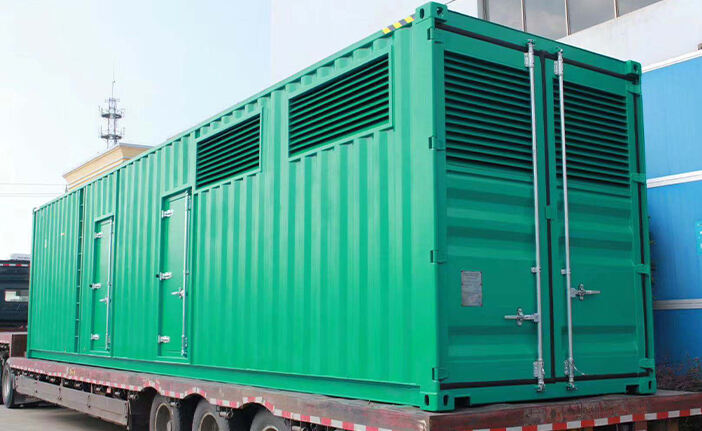How to select emergency diesel generator sets
Emergency diesel generators are mainly used in important places. In the event of an emergency or accident power outage, there is an instantaneous power outage, and the power supply can be quickly restored and extended for a period of time through the emergency generator set. This type of electrical load is called level ① load. Equipment, instruments, and computer systems with strict requirements for power outage time should be equipped with batteries or UPS power supply in addition to generators.
The operation of emergency diesel generators has two characteristics:
The first characteristic is to respond to urgent needs, with a short duration of continuous operation, usually only requiring a few hours of continuous operation (≤ 12H);
The second characteristic is to serve as a backup. The emergency generator set is usually in a shutdown waiting state. Only when the main power supply is completely blocked and cut off, the emergency diesel generator set will start running to supply emergency electricity load. When the main power supply is restored to normal, it will immediately switch to shutdown.
(1) Determination of emergency diesel generator capacity
The rated capacity of the emergency diesel generator set is the 12 hour rated capacity after atmospheric correction, and its capacity should be able to meet the total calculated load of emergency electricity. It should be verified according to the generator capacity that can meet the requirements for starting a single large capacity electric motor in level ① load. Emergency generators generally use three-phase AC synchronous generators, with a calibrated output voltage of 400V
(2) Determination of the number of emergency diesel generator sets
When there are multiple backup generator sets, generally only one emergency diesel generator set is set up. From reliability considerations, two sets can also be selected for parallel power supply. The number of urgently needed generator sets should generally not exceed 3. When selecting multiple units, it is advisable to choose a complete set of equipment with the same model and capacity, similar pressure and speed regulation characteristics, and consistent fuel properties for maintenance and shared spare parts. When there are two urgently needed generator sets in supply, the self starting device should enable the two sets to serve as backup for each other. That is, after the delay confirmation of the mains power failure and power outage, a self starting command should be issued. If the first unit fails to self start for three consecutive times, an alarm signal should be issued and the second diesel generator should be automatically started.
(3) Selection of emergency diesel generators
Emergency units should choose diesel generators with high speed, turbocharging, low fuel consumption, and the same capacity. The high-speed turbocharged diesel engine has a large single unit capacity and occupies little space; Diesel engines are equipped with electronic or hydraulic speed control devices, which have good speed control performance; Synchronous motors equipped with brushless excitation or phase compound excitation devices should be selected for generators, which are more reliable, have a low failure rate, and are easier to maintain and repair; When the capacity of a single air conditioner or motor is large in level 1 load, it is advisable to choose a generator set with third harmonic excitation; Assembled on a shared chassis with shock absorbers; Silencers should be installed at the exhaust pipe outlet to reduce the impact of noise on the surrounding environment.
(4) Control of emergency diesel generator set
The control of emergency generator sets should have fast self starting and automatic switching devices. When the main power supply fails and loses power, the emergency unit should be able to quickly start and restore power. The allowable power outage time for level 1 loads ranges from tens of seconds to tens of seconds, which should be determined based on specific circumstances. When the main power supply of an important project is cut off, the first step should be to determine a time of 3-5 seconds to avoid the instantaneous voltage drop and the time when the municipal power grid is closed or the backup power supply is automatically put into operation. Then, the command to start the emergency generator set should be issued. It takes some time from issuing instructions, starting the unit, accelerating to being able to carry full load. Generally, large and medium-sized diesel engines also require pre lubrication and warm-up processes to ensure that the oil pressure, oil temperature, and cooling water temperature during emergency loading meet the specifications of the factory's technical specifications; The pre lubrication and warm-up process can be carried out in advance according to different situations. For example, emergency units for military communication, important foreign affairs activities in large hotels, large-scale mass activities in public buildings at night, and important surgical operations in hospitals should be in a pre lubricated and warm up state in order to start quickly at any time and minimize power outage time.
After the emergency unit is put into operation, in order to reduce the mechanical and current impact during sudden load increases, while meeting the power supply requirements, the emergency load can be increased in stages according to time intervals. According to national standards and military standards, the first allowable loading capacity for automated units after successful self starting is as follows: for those with a rated power not exceeding 250KW, the first allowable loading capacity shall not be less than 50% of the rated load; For those with a calibrated power greater than 250KW, follow the technical specifications of the factory product.

 EN
EN
 AR
AR
 BG
BG
 HR
HR
 CS
CS
 DA
DA
 NL
NL
 FI
FI
 FR
FR
 DE
DE
 EL
EL
 HI
HI
 IT
IT
 JA
JA
 KO
KO
 NO
NO
 PL
PL
 PT
PT
 RO
RO
 RU
RU
 ES
ES
 SV
SV
 TL
TL
 VI
VI
 TH
TH
 TR
TR
 GA
GA
 CY
CY
 BE
BE
 IS
IS



